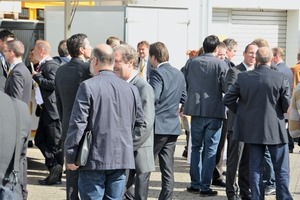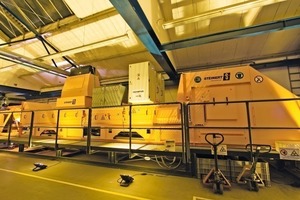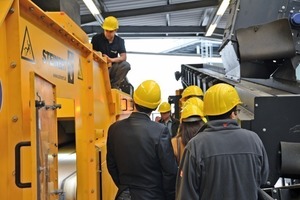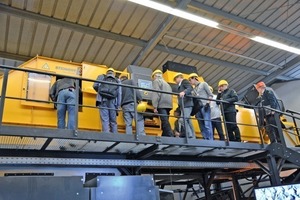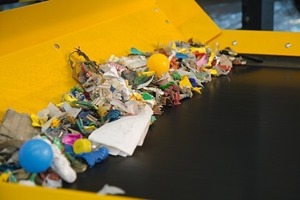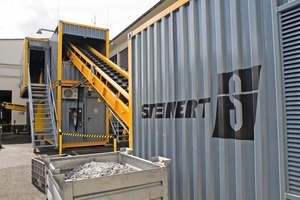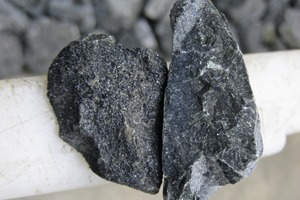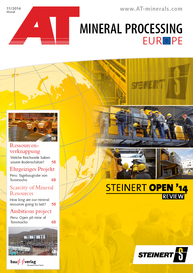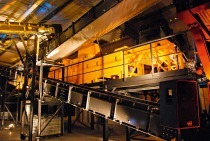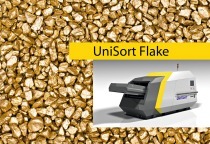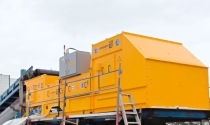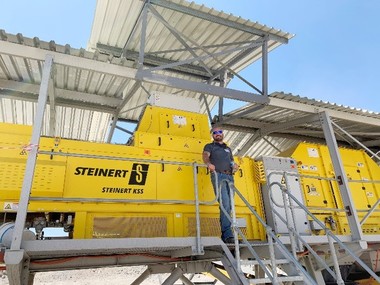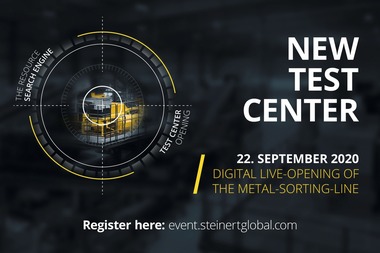STEINERT – 125 years of progress
125 years ago the foundation stone was laid for the success story of Steinert Elektromagnet GmbH, the company that supplies separating solutions for recoverables and impurities. This presented a perfect occasion to welcome customers, partners, representatives to the in-house trade show STEINERT OPEN 2014, an event with a wide-ranging programme held under the motto of “125 years of progress” at the headquarters of the company in Cologne from 24 to 25 September 2014. On 27 September, STEINERT employees with their families and friends were also welcomed to the event (Fig. 1).
Within the framework of the STEINERT UNIVERSITY 2014, national and international representatives of the company were able to find out about current technologies in training sessions. The programme focussed on fundamental principles of magnet and sensor technology, with the different operating principles being demonstrated with reference to field examples at the machines themselves and information provided on service and maintenance being conveyed (Fig. 2). This was followed by the start of the STEINERT OPEN 2014, at which end customers, plant suppliers and the global contacts of the company, who had travelled from Europe, North and South America, Africa, Asia and Australia, took the opportunity to engage in lively dialogue and exchange of information. This international industry meeting was organized as an in-house exhibition at the company’s facilities with information stands on special projects and live presentations of complex processes and the latest technologies (Fig. 3).
One of the highlights of the company exhibition were the demonstrations at the test centre, where visitors were able to view an exemplary recycling process chain for a typical automotive shredder operation (Fig. 4). For detail views of the process stages, illustrations of the different sub-stages of the overall process could be called up on touch screens at infopoints – a service actively used by the visitors.
A shredder heavy fraction was used as the input material for the demonstration on the indoor and outdoor areas of the test centre. In the first process step, exposed iron metals were removed with an electrical overhead suspension magnetic separator (STEINERT UME). Then on an eddy current separator with eccentric pole system (STEINERT NES 5009) the solid non-ferrous metals were removed. The remaining material stream from the non-ferrous separator was cleaned in an inductive sorting system (STEINERT ISS), with the removal of any remaining metals, such as cables and stainless steel. This produced a metal-free waste product and a metal concentrate for further processing.
In the second process step, the NF metals from the NF metal separator were separated by means of an X-ray transmission sorter (STEINERT XSS T) into a light and heavy metal fraction. In another X-ray transmission step, the light metals were then sorted into cast and wrought alloys, while the heavy metals were also separated with the help of X-ray fluorescence (STEINERT XSS F). Here it is possible to recover copper-bearing materials or even copper as a single fraction as well as zinc or precious metals.
The third process step concerned the remaining metal-free stream, from which any wood contained is removed with the help of near-infrared technology (UNISORT PR) (Fig. 5). In the fourth process step, finally the metal concentrate of the STEINERT ISS was cleaned, with the removal of large metals, primarily stainless steel, in a further sorting step. From the remaining fraction of this step, a cable product is produced by means of 3D and inductive detection in a combined sorting system (STEINERT KSS).
As another highlight, which is also interesting for sorting minerals with the help of X-rays, the mobile STEINERT XSS was presented (Fig. 6). During the live demonstration, the separation of valuable minerals was simulated. Following STEINERT OPEN, the new mobile STEINERT XSS T X-ray sorting system was shipped to Australia.
STEINERT XSS T “sees” through the materials, recognizing different material densities (Fig. 7). Material composites and internal adhesions are also detected. It is therefore ideally suitable for applications in which light metals are separated from heavy metals or impurities like glass, ceramic and stones have to be removed from waste-derived fuels, waste wood or compost or ores have to be separated from dead rock.
Here the combination of feeder and high-speed belt conveyor ensures reliable singling of the particles. While these particles pass the X-ray source and the camera, in fractions of a second detection and classification take place depending on the presetting of the flexible software. Reliable, high-speed operating compressed air valves enable discharge of the required particles. Usually the grid dimension of the blow-out unit is 12.5 mm. Depending on the application, the sensitivity of the X-ray detection allows detection of particles from a few square millimetres.
This year’s STEINERT OPEN was rounded off with a fitting celebration of the company anniversary with all guests, employees, friends and families.
//www.steinert.de" target="_blank" >www.steinert.de:www.steinert.de

